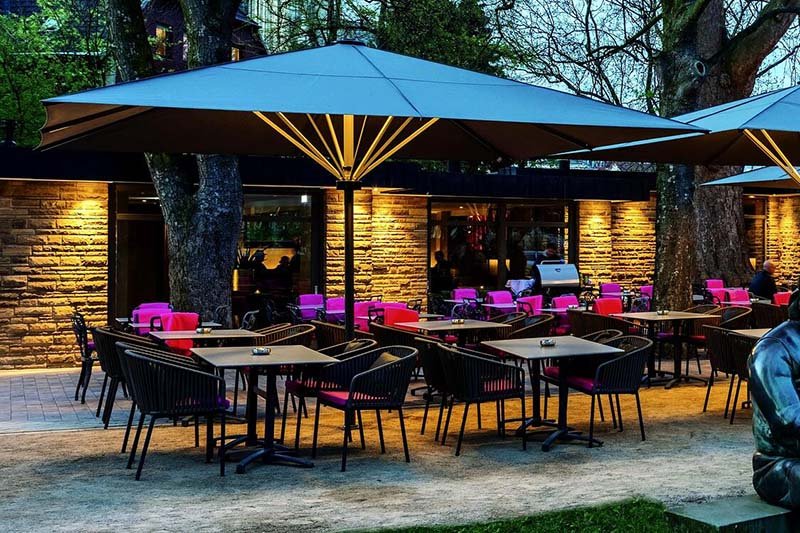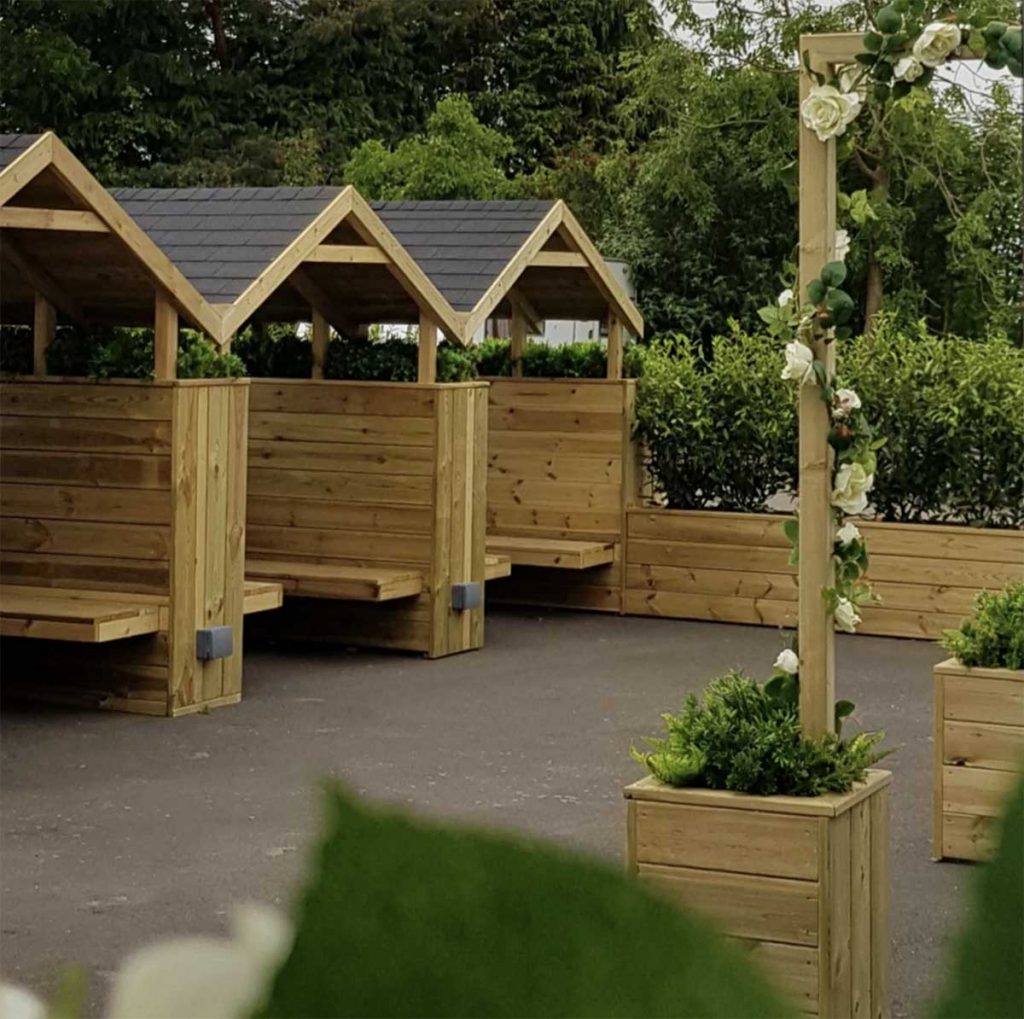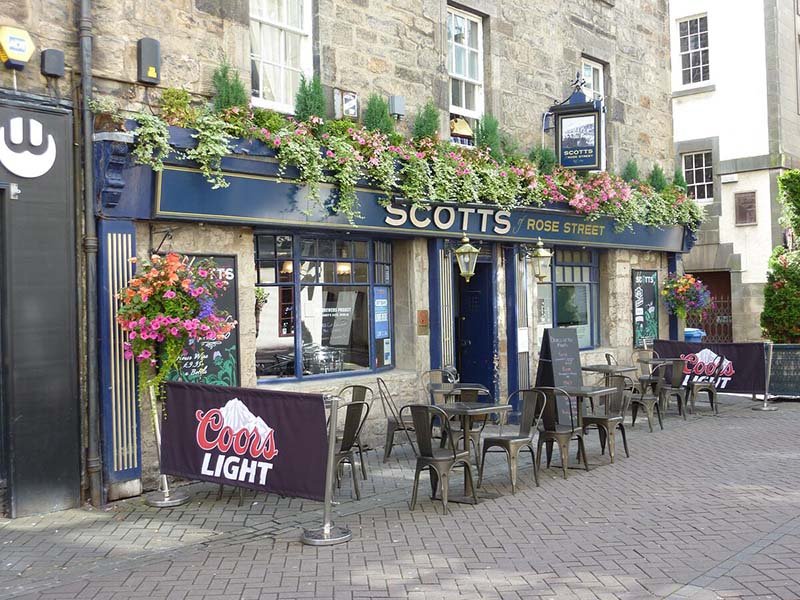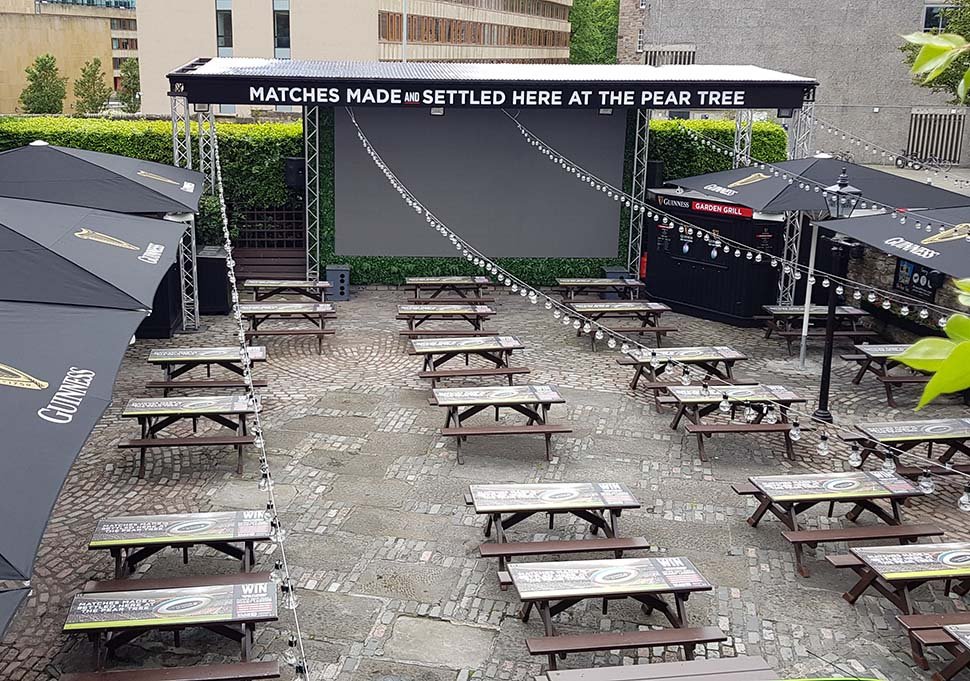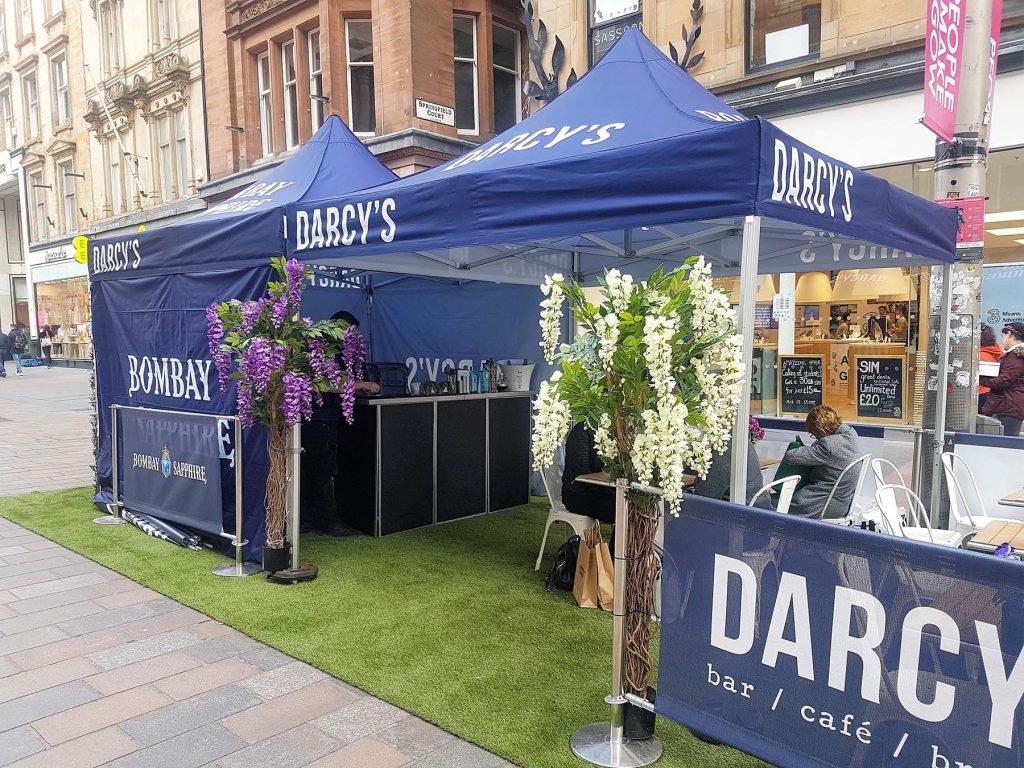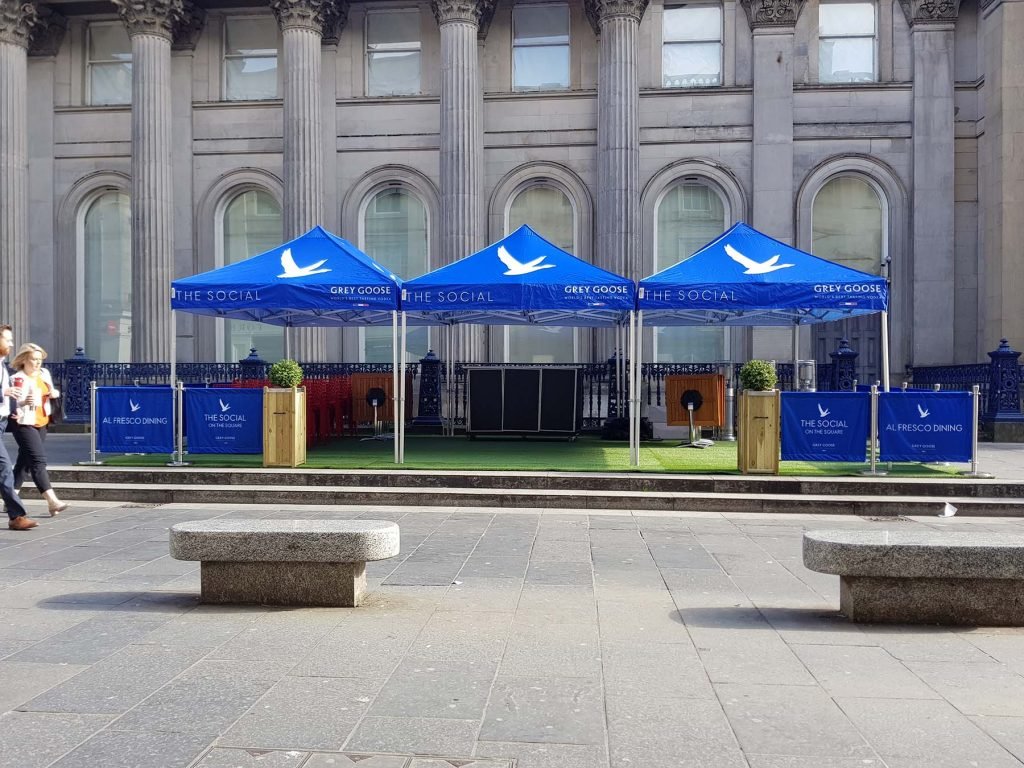How to make restaurant outdoor eating areas successful in Scotland
The information in this article below has been collated into a handy, downloadable PDF guide. Packed with full-colour images, tried and tested tips and advice specifically for the unique Scottish climate, this will give you down-to-earth advice that is easy to take away and put into action.
This guide aims to provide helpful insight into how to design, create and develop any type of hospitality outdoor dining space specifically for the Scottish climate so that it works successfully for guests, managers and owners.
- This guide will help you to:
- Attract and delight more guests than ever before
- Improve the effectiveness of your venue
- Increase revenue and profitability
Download your FREE copy of The Benholm Guide To Creating Successful Outdoor Dining Spaces In Scotland
The 8 most important points to consider when designing an outside space:
1 – Outdoor Dining In Scotland
1 – Outdoor Dining In Scotland
Outdoor dining is now one of the top search trends for restaurants & hotels
In Scotland, the requirements for a successful outdoor dining space are unique. The weather is not much different to the rest of the UK although it is much more changeable. Typically, it is cloudier, more windy and cooler (summer temperatures are, on average, about 3 degrees lower)
Frequently changing weather creates definite challenges to making an outdoor space a year-round success. Emphasis must be on having a dynamic system that is quick and simple to operate and is adaptable for all weathers.
Scotland has more hours of daylight in the summer (In north Scotland there are four more hours of daylight in midsummer than in London) providing an excellent opportunity to maximise revenue!
It is a common opinion that “food tastes better outside!”
By leveraging skyline views, waterfront vistas, sunsets, people watching, and more, outdoor dining can offer a sense of time, place, and wonder that even the most intriguing indoor spaces cannot.
By bringing socialisation outside and drawing positive attention to the establishment, outdoor spots can also add value to a restaurant by increasing the seating capacity and boosting revenue potential.
And, of course, there is nowhere on earth like Scotland with its pure air, stunning scenery and great culture!
2 – Biophilic Design
Connecting with nature
Research has recently revealed the importance of Biophilic Design in attracting and delighting guests.
This principle is based on an inherent connection that humans have with nature and is why so many of the best outdoor eating areas include beautiful displays of plants and flowers.
3 – The Location
There are many different types of outdoor dining environments and all have unique requirements
On-street, Inner City Locations
- Pavement Café
- Street dining spaces
- Hotel front of house
- Retail outlets and shopping centres
- Balcony and terrace planting
Common challenges:
- All items must be carried out and set up for the day and removed into off-street storage at night
- Nothing can be fixed to floors or walls and must withstand high winds, often on uneven surfaces
Permanent Patio Locations
- Al Fresco Restaurants
- Pub beer gardens
- Roof gardens
- Hotel Terraces
Common challenges:
- All items need to stay out in all weathers
- Everything needs to be theft and vandal proof
4 – Protection
Guests need to be protected from all aspects of the weather
Rain, wind, cold, heat, UV Rays
Most parasols and awnings, etc. are designed to protect guests from the sun. If this is the sole requirement there are many options available and most do an excellent job.
Make sure the material offers UV protection and the mechanism is easy to operate as, in Scotland, it is likely that it will be frequently raised and lowered.
Also, most Council planning departments require parasols and other free-standing structures to be approved to force 10 wind speed rating.
In Scotland, the most common requirement is for protection from the wind and the rain. Parasols, awnings, pergolas and even semi-permanent structures can be used very effectively so long as a proper site assessment has been carried out.
Site assessment points that should be considered:
- Aspect – which direction does it face?
- Prevailing wind direction and speeds
- Proximity and size of nearby buildings or natural windbreak features
- Height restrictions such as overhead cables or trees
- Sight lines for upper-level windows, lighting or security cameras
Consider adding side panels or skirts to protect from prevailing winds and driving rain. These also help retain the warmth in cold weather. Be creative with colours and branding and make these side panels even more effective than just wind and rain protection.
Where there is a wall you can fix to, awnings are an excellent option for a completely open space, free from any upright supports. Ensure awnings are properly installed by qualified personnel for a long-lasting, hassle-free solution. Creative colour and branding options can provide opportunity to transform any outside dining space.
Heaters, lighting and music speakers are available as part of a parasol package and can greatly enhance the guest experience.
Top Tip: Plants and trees can provide attractive natural windbreaks and don’t create such an enclosed feel as side panels on a parasol
5 – Boundary Defining
Boundary demarcation is often very critical in pavement dining spaces to avoid pedestrian walkways being obstructed. Care should be taken as to this aspect because council planning departments view this very seriously and failure to adhere correctly to legislation could result in licences being revoked.
There are many ways of creating effective boundaries such as:
- Barrier posts and screens – either rigid or fabric
- Barrier posts with ropes
- Single tall planters with screens – either rigid or fabric
- Single tall planters with ropes
- Planted troughs with tall plants, trellis or clear screens
- Tall barrier troughs with planting
- Single planters positioned closely together
The use of planters as barriers is highly recommended by most councils as it helps improve the aesthetics of the dining space and could assist in the early approval of a licence application.
Screens (fixed between posts or planters) are available in many different materials including a mesh fabric which is more resistant to high winds whilst still providing an effective windbreak.
Many fabric screens can be branded extensively and provide very effective advertising.
Rigid screens made from metal or wood are another option that ensures a very robust and long-lasting solution.
Most councils require a solid barrier at each end of a pavement dining space and this must extend to the full width of the defined space.
Top Tip: Ensure any screens have a rigid bottom tapping bar for blind or partially-sighted persons as required by most councils.
Where barriers must be cleared away at night it is worth considering how this is going to be achieved and who is going to do it. Large barrier planters can be very heavy when the soil is wet and the use of a trolley or having castors fitted can assist.
Make sure that any large planters are manufactured from a robust material or they may become damaged quite quickly if they are moved regularly. A modular system that is easily broken down can make the whole set-up and removal process much more manageable.
Creating a defined boundary helps to provide guests with an element of privacy as well as some protection from traffic, pedestrians, and noise. When nicely designed, it will help make the venue more visible and attract more guests.
Top Tip: If castors are specified ensure that they are of superior quality and large enough to handle uneven paving because planters can be quite heavy when wet and a broken castor can make a planter almost immovable. Additionally, specify for a least two of the castors to have a locking / braking mechanism so that they can be positioned and won’t move or roll away even on a slope or in high winds.
6- Comfort
Creating a perfect guest experience is always paramount to the success of any venue
In addition to a faultless service, guests need to feel comfortable and relaxed in the outdoor dining space. Ensuring protection from the weather as described above is fundamental.
Additional comfort can be provided by some of the following:
Infrared heaters, heated seats, cushions, seat blankets or fleeces, lighting, candles, music, table centre decorations, flooring – artificial grass or decking, control of insects and rodents.
Tables and chairs should be chosen carefully. Here are a few items to consider:
- Metal chairs and tables can get hot in the sun
- Select quality metal furniture that won’t rust and look unsightly
- Tests have shown that chairs with arms are far more attractive to guests
- Stackable chairs and folding/modular tables make them easier to move
- Self-levelling tables are essential for uneven surfaces
- Adjustable legs are useful on sloping ground
- Chairs that dry off quickly and easily are best for uncovered spaces
Provide that little bit extra: When guests have an experience that exceeds expectations… they will be back…and so will their friends!
Top Tip: For particularly windswept locations choose tables that have the facility to add an inset planter in the centre. This will provide an attractive-looking table without the risk of the flowers blowing away.
7 – Planting
The amount of planting required to make an outdoor dining space feel right will depend on the location. Typically, inner city locations require more planting, and locations in a garden environment or where there are attractive natural views, require less.
Real live plants are always the best option but artificial plants are now very realistic and can be used in locations where live plants may not thrive or may not be able to be accessed for maintenance.To keep any planting looking attractive and lush and colourful, a comprehensive maintenance service is essential. This is rarely something that can be done by the staff on site unless they are highly skilled in this and have plenty of spare time!
Some examples of planting suitable for outdoor dining spaces include:
Specialist Services: Seasonal hanging baskets and window boxes are long-term favourites for Pubs and Beer Gardens
Top Tip: A maintenance contract should always include free replacement plants and no call out charges so that costs are fixed for the term of the contract. This ensures there are no hidden charges making budgeting easier and guarantees beautiful planting all year round.
8 – Branding
An outdoor dining space is really an extension of the hospitality venue and therefore brand consistence needs to be maintained.
An incredible amount of attention to detail is often put into the interior design and this can make any venue special and unique. The outside space is different but it should not detract or cheapen the whole visitor experience.
The outside dining space should be seen as an opportunity to enhance the main venue by either extending or enlarging the brand experience or by creating a new, additional brand experience that links with the main brand.
Parasols and barrier screens provide excellent branding opportunities and planters can be used in this way too. In addition to on-brand messages, signage and route guidance can be incorporated too. Be creative!
Extend your brand reach: A whole new branding opportunity for your venue to increase your street presence
Top Tip: Most planters are available in any colour to enable whole brand awareness using corporate colour themes throughout the space. Flowers and seasonal displays can be colour-matched to a corporate theme too.
